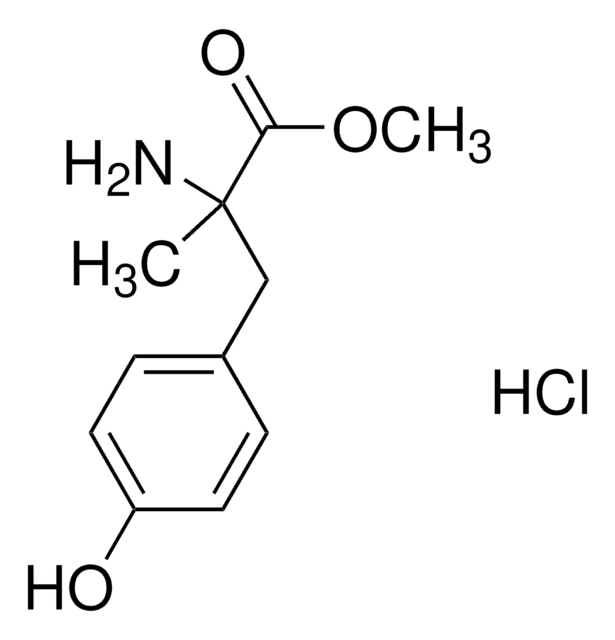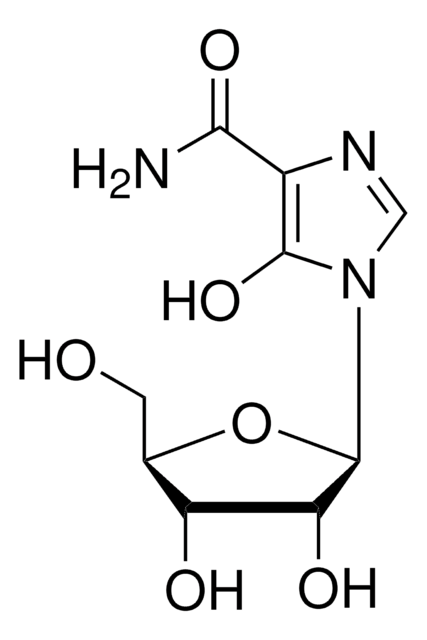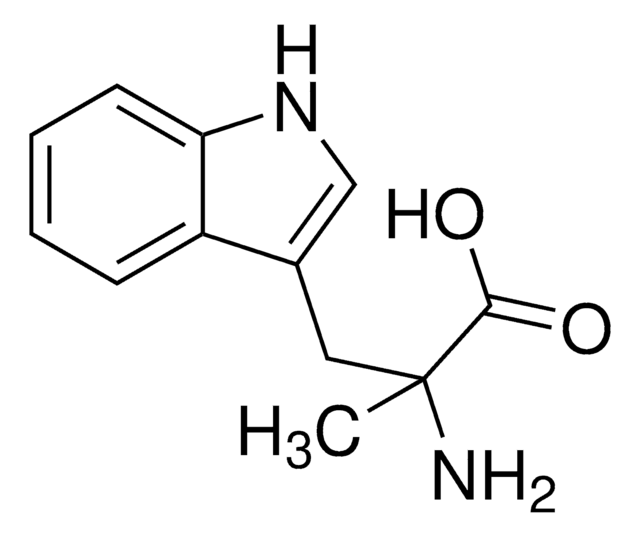M8131
α-Methyl-L-tyrosine
≥98% (TLC)
Synonyme(s) :
L-2-Methyl-3-(4-hydroxyphenyl)alanine, L-AMPT
About This Item
Produits recommandés
Essai
≥98% (TLC)
Forme
powder
Température de stockage
−20°C
Chaîne SMILES
C[C@](N)(Cc1ccc(O)cc1)C(O)=O
InChI
1S/C10H13NO3/c1-10(11,9(13)14)6-7-2-4-8(12)5-3-7/h2-5,12H,6,11H2,1H3,(H,13,14)/t10-/m0/s1
Clé InChI
NHTGHBARYWONDQ-JTQLQIEISA-N
Informations sur le gène
human ... TH(7054)
Vous recherchez des produits similaires ? Visite Guide de comparaison des produits
Application
- to test its effect during acute stress in zebrafish[1]
- in cannabinoid receptor type-1 (CB1) knockout and wild type mice, to test its effect on norepinephrine turnover[2]
- to test catecholamines depletion on stress in rat spleen samples[3]
- to block dopamine synthesis in dopaminergic neurons[4]
Actions biochimiques/physiologiques
Autres remarques
Code de la classe de stockage
11 - Combustible Solids
Classe de danger pour l'eau (WGK)
WGK 3
Point d'éclair (°F)
Not applicable
Point d'éclair (°C)
Not applicable
Équipement de protection individuelle
Eyeshields, Gloves, type N95 (US)
Faites votre choix parmi les versions les plus récentes :
Déjà en possession de ce produit ?
Retrouvez la documentation relative aux produits que vous avez récemment achetés dans la Bibliothèque de documents.
Les clients ont également consulté
Filtres actifs
Notre équipe de scientifiques dispose d'une expérience dans tous les secteurs de la recherche, notamment en sciences de la vie, science des matériaux, synthèse chimique, chromatographie, analyse et dans de nombreux autres domaines..
Contacter notre Service technique










